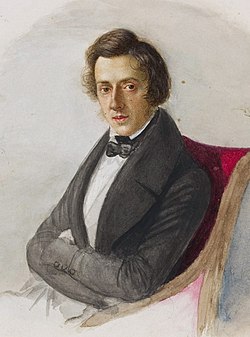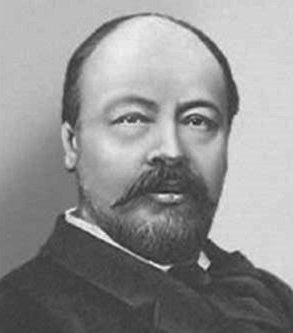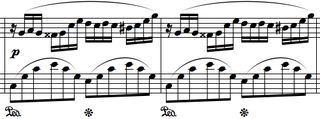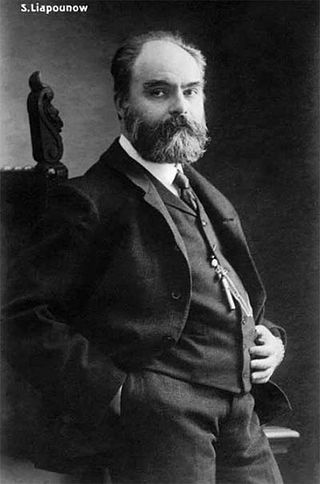
Most of Frédéric Chopin's compositions were for solo piano, though he did compose several pieces for piano and orchestra (including two piano concertos) as well as some chamber works that include other instruments.
Contents
- Piano solo
- Ballades
- Études
- Impromptus
- Mazurkas
- Nocturnes
- Polonaises
- Préludes
- Rondos
- Scherzos
- Sonatas
- Variations
- Waltzes
- Miscellaneous pieces for solo piano
- Piano and orchestra
- Concerto
- Miscellaneous
- Chamber music
- Flute and piano
- Cello and piano
- Violin, cello and piano
- Voice and piano
- Posthumously published 11
- Known lost works
- Notes
- See also
- References
- External links
His larger scale works such as sonatas, the four scherzi, the four ballades, the Fantaisie in F minor, Op. 49, and the Barcarolle in F♯ major, Op. 60 have cemented a solid place within the piano repertoire, as have his shorter works: the polonaises, mazurkas, waltzes, impromptus and nocturnes.
Two important collections are the Études, Op. 10 and 25 (which are a staple of that genre for pianists), and the 24 Preludes, Op. 28 (a cycle of short pieces paired in a major key/relative minor key pattern following the circle of fifths in clockwise steps). Also, Chopin wrote numerous song settings of Polish texts, and chamber pieces including a piano trio and a cello sonata.
This listing uses the traditional opus numbers where they apply; other works are identified by numbers from the catalogues of Maurice J. E. Brown (B), Krystyna Kobylańska (KK), Józef Michał Chomiński (A, C, D, E, P, S), and Jan Ekier ( WN , Dbop.).





